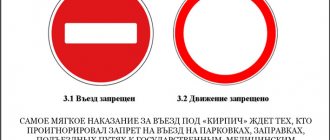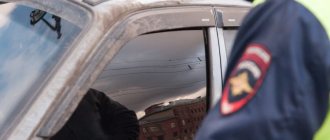Why use a child seat
In an accident, the child will survive. In a traffic accident, an unbelted child can be seriously injured or even die. Crash tests prove this.
The most serious injuries can occur to a small passenger if he sits in the middle of the rear seat. If the car hits an obstacle, the child will fly out onto the track through the front window of the car or hit the dashboard. The chair will hold him in place and he will remain intact.
The driver will not be punished. By law, a child under seven years of age is transported in a child car seat. If the child does not have such a seat, the driver will be fined 3,000 rubles.
Children will not distract the driver. From about a year old, the child begins to actively interact with the world around him - grab, press, taste. Sitting still is boring, but the switches, buttons and levers inside the car are very interesting for the baby. All this can distract the driver from the road situation and lead to an accident. In a chair, the child is limited in his movements.
How can a traffic police inspector check for a child in a car?
It’s very simple - by visual inspection through the car windows; if the car windows are tinted, then the inspector may ask you to lower them.
But the situation familiar to many drivers with the unauthorized opening of the door by an inspector to check the rules for transporting children is illegal. A police officer can do this only in the presence of invited witnesses or using video recording, having previously drawn up an inspection report.
If you do not violate anything, it is better to comply with the inspector’s request to open the door or lower the window. You will simply lose more time if the traffic police officer decides to carry out the inspection procedure in accordance with current legislation.
The State Traffic Inspectorate often carries out preventive measures with names like “child in the car” - the traffic police crew is located in the morning hours near a kindergarten or school and “works out” all approaching cars. And this is correct, no matter how it sounds.
More on the topic: Fine for tinting in 2021
At what age is it necessary to transport children in special seats?
Even newborns are required by law to be placed in a special car seat.
Until the age of seven - in a chair. As required by law, children under seven years of age are seated by the car owner in a seat that corresponds to their weight and height.
The chair can also be placed on the passenger seat in the front. One condition - turn off the airbag if you place the seat backwards. The button is usually located on the side of the glove compartment - near the door hinge. This is necessary so that the deployed airbag does not throw the seat along with the small passenger. This is written in the car manual.
From seven to eleven years old - in the back seat. A child over seven years old is allowed to ride in the second row without special devices. A standard seat belt will suffice.
A sticker next to the front airbag deactivation button shows what will happen to the seat and baby when the airbag is activated.
How can a traffic police officer ensure that children are transported correctly?
Numerous tests have proven that conventional seat belts can cause serious injury to small passengers even in minor collisions. This is because they are designed for an average height person, keeping his chest in a static position. For most children, the strap will be kept at neck level. This will not only not keep children in the chair, but can cause damage to the neck and collarbones.
Improper transportation of children
On the other hand, child seats are immediately designed for the safety of young passengers. They are often equipped with their own belts (Isofix), and the main belt of the car secures the seat itself, and not the child in it. It is this measure that allows us to say for sure that injuries are reduced significantly. Even in the event of a serious accident, the chances of a successful outcome remain.
Today, the rules for transporting children are strictly regulated by traffic rules. In particular, the main provisions are enshrined in clause 22.9.
- Firstly, it is immediately stipulated that children under 7 years old can only be transported in child seats. After 7 years, they can sit in a car without a special seat, but only in the back seat. You will need a seat if you are transporting children in the front. The rules then require that these safety devices be used on a child before he reaches 12 years of age.
- Secondly, children under 12 years old cannot carry children on the back of motorcycles.
Important! The original prescriptions changed over time. For example, it is now said that the definition of “other devices” is no longer used. This means that only a special certified seat is suitable for transporting children - and nothing else. So-called boosters (seats without a backrest) can be used after 7 years, and they are equivalent to armchairs. And most models are immediately made in such a way that the backrest can be removed over time, making the design lighter.
We suggest you read: I bought a car with fines
The only option inspectors have is a visual inspection. When stopping a vehicle carrying small children, the traffic police officer has every right to find out the age of the small passenger and make sure that the rules for transporting children are not violated.
Important detail! Modern cars are often tinted at the factory. Therefore, the traffic cop may ask you to lower the window.
Advice. It is better not to enter into conflict with a person in the service. A polite request should be answered with politeness. Formally, a traffic police officer has no right to open the doors or lower the car window on his own. But he can conduct a full inspection, even if the car does not cause any suspicion, according to the driver.
When children are transported incorrectly, punishment follows. It’s interesting that sometimes a child restraint is actually present, but a fine is still issued. This happens if the child is not in place. A traffic cop can punish for:
- children are on the laps of other passengers;
- even if the child does not fit in the chair, according to the law, the inspector can issue an order;
- when a child is sitting in a seat, but the seat belt is unfastened or the seat itself is not secured in the car;
- if the rule is not followed: one seat - one child;
- The car is not equipped with seat belts (when there are devices only in the front, children are strictly seated there).
As for the number of regulations, they are imposed on each driver (even when the official transports a group of young passengers at once not according to the rules) in a single amount. However, the peculiarity of the situation is such that the violation must be eliminated immediately. That is, in fact, the traffic cop can impose a second fine if you start driving without eliminating the order.
Traffic police officer
Types of child restraints
Manufacturers divide child seats according to the height and weight of the child. There are four groups in total:
- for a child up to one year old,
- up to seven years old,
- from seven to twelve years old,
- after twelve years.
From left to right: cradle up to twelve months, chairs up to seven years and from seven to twelve years
This booster is for children over seven years old. It is designed so that the child sits higher - so the straps will lie on the chest and not on the neck. It costs less than a seat, but the UN is against placing children under 125 cm and weighing less than 22 kg on a booster.
Basic rules for transporting children in a car
High safety requirements when transporting children are absolutely justified: unlike adults, a child cannot understand the consequences of not taking safety measures and, moreover, choose and apply such measures independently.
In Russia, the requirements for transporting children were included in the text of the Road Traffic Rules back in 1993, and since then they have been constantly clarified and tightened. The current version of the traffic rules (clause 22.9) states that transportation of children under 12 years of age in front is permitted only when using special devices designed in strict relation to the height and weight of the child: child restraint devices (child restraints).
As for the rear seat, it is allowed to transport children under 12 years old both with the use of a child restraint system and with the use of “other means that allow the child to be fastened using seat belts.”
The age threshold of 12 years was not chosen by chance at the time. According to statistics, by this age most children reach a height of 150 cm and a weight of 35 kg. In turn, the lower threshold parameters for height and weight are set by designers when designing standard car seat belts.
However, experts have come to the conclusion that it is not entirely correct to set only age restrictions in the rules for transporting children - height and weight by a certain age can differ greatly from the average statistical parameters. That is why in 2016 a bill was developed to change the requirements for transporting children.
The changes are based on the physiological characteristics of children: it is proposed to leave the decision on the method of transporting a child over 7 years old in the back seat (using a child restraint system or only standard seat belts) to the discretion of adults.
And a separate issue is the transportation of disabled children who, due to limited capabilities, simply cannot be placed in a child restraint system or restrained by “other means.” The bill exempted adults from the need to use special devices when transporting such children.
The introduction of changes was intended several years ago, but as of January 2021, the bill has not yet received movement.
Discounted fine for transporting children without a seat
There is a rule that works with all administrative fines. If the driver agrees with the decision and does not plan to appeal it, he has 20 days to pay with a 50% discount. Instead of 3000, the driver will pay 1500 rubles. The period begins from the date of the decision. The date can be viewed on the paper order if you received a regular letter.
To avoid going to the post office, check the fine and pay at a discount on the Traffic Police Fines website.
Under the payment button there is information about the period during which the discount will be valid
Fine for ordinary people, officials and legal entities
The fine for not having a child seat varies depending on who committed the offense:
| Responsible person | Amount of fine in rubles |
| Driver (Parents, relatives) | 3 000 |
| Officials – educators, teachers, taxi drivers | 25 000 |
| Legal entities – school, taxi company | 100 000 |
It is possible to pay the fine with a 50% discount within 20 days from the date of delivery of the decision to the citizen.
Is it possible to ride in a taxi without a child seat?
No, a taxi is the same car, and it can also get into an accident. In taxi ordering applications you can order a car with a child seat. For example, Citymobil and Yandex.Taxi make it possible to select it according to the child’s weight.
This is what Citymobil's choice looks like
Yandex.Taxi also has a choice of seat type
Taxi fine if child is without a seat. If a traffic police officer stops a taxi and a child is riding in it without a special seat, the director of the taxi company will receive a fine of 100,000 rubles. If people were injured or killed as a result of the taxi ride, the director will receive a more serious punishment. This is a fine of up to 500,000 rubles or up to 6 years in prison with a fine of up to 500,000 rubles.
How much is the recovery amount?
Today it is difficult to imagine that just a few years ago the fine for a child who was not wearing a seat belt in a vehicle was 500 rubles. This is the same amount as if an adult were not seated in the car. But since 2013, the amount has changed, and now the fine is 3,000 rubles.
Please note that for the first time since 2021, a new monetary penalty has been introduced in the same article . Thus, for the absence of a child seat in the car, the fine is now 25 thousand rubles for an official and 100 thousand rubles for a legal entity. It would seem that the amount is impressive, but what makes drivers neglect traffic rules? Especially when it comes to children.
In 2021, the fine for not wearing a seatbelt varies depending on the age of the child. If the child is under 12 years old and there is no special child seat in the car , then the fine will be 3,000 rubles. If the child is over 12 years old, the fine will be 1000 rubles. This is stated in Article 12.23 of the Administrative Code.
If you transport a baby in the back seat without using restraint devices , then the fine for the driver in this case will be 3,000 rubles, 25,000 rubles for an official and 100,000 rubles for a legal entity. This provision is discussed in Art. 12.23 part 3 of the Code of Administrative Offenses of the Russian Federation.
Please note that when transporting children of this age category, it is also necessary to use special child restraint devices that correspond to the weight and height of the child, or use other means, the design of which allows you to fix the position of the children. A child under 12 years of age may travel in the front seat . This is the subject of clause 22.9 of the traffic rules (read about the size of the fine for transporting children in the front seat without a seat)
Violation of the requirements for the transportation of children established by the Traffic Rules - entails the imposition of an administrative fine on the driver in the amount of three thousand rubles; for officials - twenty-five thousand rubles; for legal entities – one hundred thousand rubles. (Article 12.23 of the Administrative Code)
Alternative to child car seats
It does not exist either from a legal or security point of view. Stores sell pads that hold the belt on the child's chest, preventing it from moving to the neck. But they do not have a safety certificate.
Only seats have a certificate - this is proof that they have passed all the necessary tests and can carry a child in them. Proof of such checks is an orange sticker on the chair:
The inspector will equate the absence of such a sticker with the absence of a chair.
These belt covers are called differently by different sellers: corrector, belt adapter or child restraint with a strap. They cannot be used - crash tests prove this. Photo from market.yandex.ru
Remember
- It is prohibited to transport children under 11 years of age without a special seat. Even in a taxi, parents must order a car with a seat.
- The fine for a driver for transporting a child without a child seat is 3,000 rubles. For the director of a taxi company, the fine is stricter - 100,000 rubles.
- If people, including children, were injured in a taxi, the director will receive a fine of up to 500,000 rubles or even a prison term of up to 6 years with a fine.
- It is almost impossible to appeal a fine for driving without a child seat, because it is easy to prove from a photo of the violation - either the seat is there or not.
- The fine can be paid at a discount in the first 20 days from the date of the decision.
All articles by the author: Evgeniy Lesnov
How much is the fine for a child seat in 2021?
There are several degrees of responsibility for failure to comply with the standards for the safe transportation of children in vehicles.
| The person who committed the violation | Penalties (RUB) |
| Individual – parents, relatives, acquaintances, etc. | 3 000 |
| Official - taxi driver, teacher, educator, etc. | 25 000 |
| Organization – educational institution, organization performing passenger transportation, etc. | 100 000 |
Individuals belonging to different groups may be subject to separate liability for violating the standards for the safe transportation of a child.
In the case of a trip in a taxi that is not suitable for transporting a child, the fine for driving without a child seat in the car will be paid by both the driver (25,000 rubles) and the passenger accompanying the child - a parent, relative (3,000 rubles) or a teacher, educator ( 25,000 rub.).
If there are clear signs of violation of the standards for the safe transportation of children, the organization providing transportation may be additionally held liable.
Traffic police fine for an unbelted child in a child seat
If a child is in a car seat while a vehicle is moving without securing it, it is equivalent to the absence of a car seat. The penalty for an unbelted child is the same as the penalty for a child without a child seat . (from 3,000 rubles to 100,000 rubles).
In addition, penalties are possible in the following cases:
- a child in the arms of an adult while the car is moving (it does not matter whether the child and passenger are buckled up or not);
- the car seat is clearly not suitable for the child’s body type;
- there is more than one child in/on the car seat;
- the car seat is not secured.
Regulatory acts regulating the safety of children while traveling by car
The basic standards for the safe transportation of children are prescribed in the traffic rules (clause 22.9). Violation of the norms prescribed in the traffic rules falls under the jurisdiction of the Administrative Code of Russia, part 3, article 12.23.
If the child is under twelve years old, but has reached the height and weight required for safe use of standard car seat belts, the situation is regulated by the norms of the administrative code prescribed in Article 12.6. (Regulation on penalties for a passenger not wearing seat belts - 1000 rubles).
In the event of an accident that causes harm to the health of a child, the situation may be regulated by the provisions of Article 238 of the Criminal Code. The amount of penalties under this article can be up to 500 thousand rubles.










